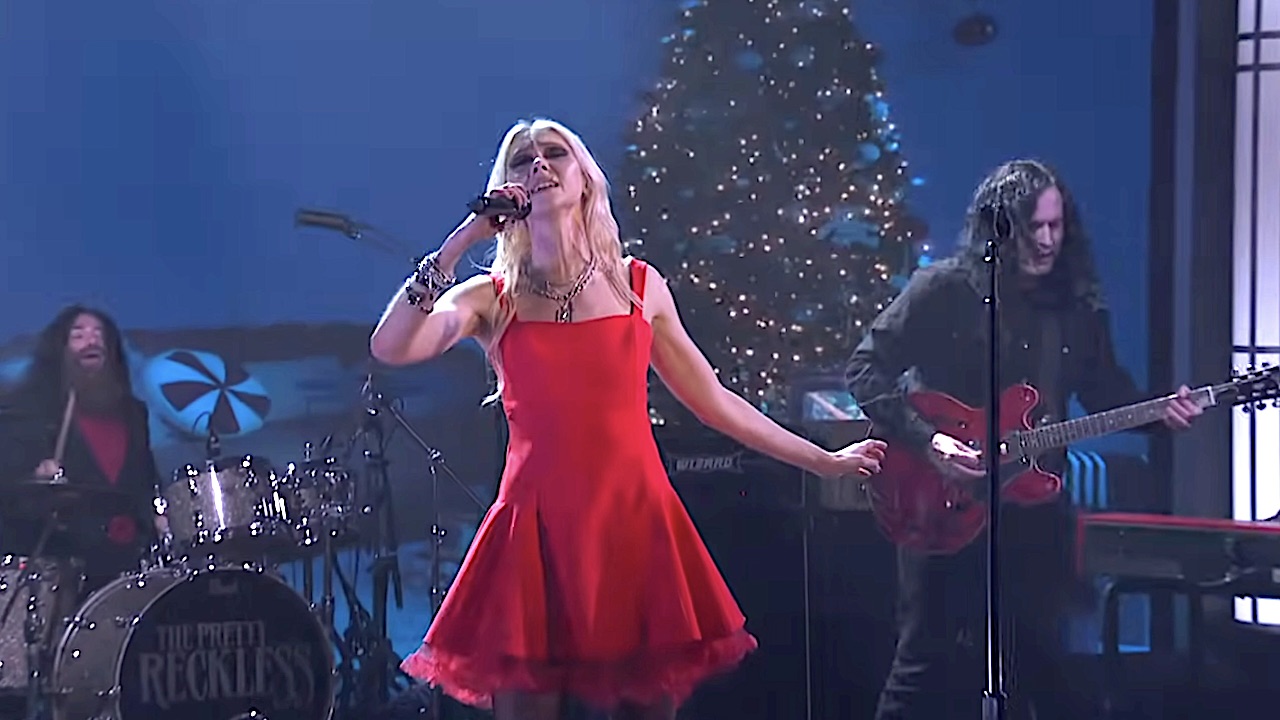How to sound like Metallica’s Kirk Hammett
ESP guitars, lots of gain, and a wah pedal with a musical sweep, it’s time to nail Kirk Hammett’s hyper-exuberant tone
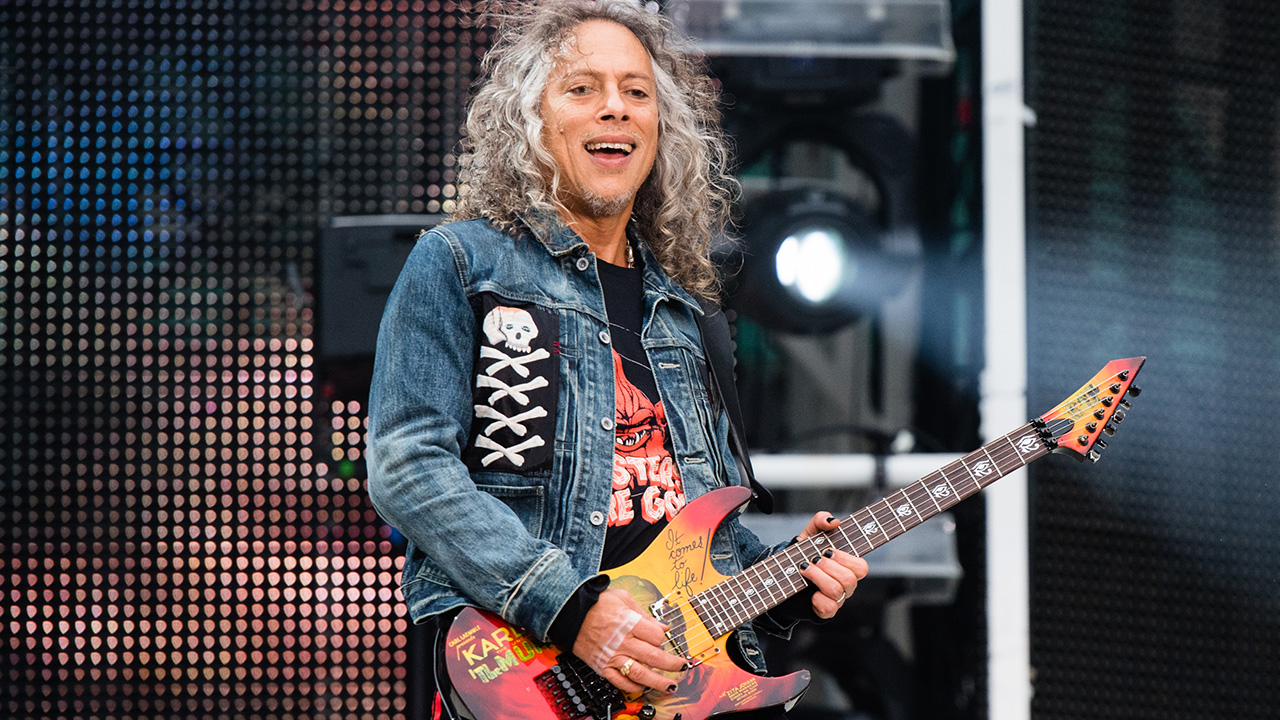
Kirk Hammett’s lead guitar playing is like the ultimate power-up. It’s the hot sauce in any Metallica jam – three shots of espresso, a banana and a bag of Haribo. Without Hammett’s effervescence, Metallica would lose much of their dynamism.
The thing about Hammett is that we tend to overlook his rhythm chops. This is the man who matches Hetfield for riff after riff, night after night. They work in lock-step, and it is what makes the multi-layered recordings come alive onstage.
To find Hammett’s tone, we have to both journey into the soul of Metallica’s rhythm tone, and then we’ve got to find a way to provide the juice for the solos. For Hammett, that’s typically his trusty wah pedal.
Some say he overuses wah. Not us. It is his signature sound. Hammett was schooled by Joe Satriani, giving him a technical background so he can think modally about what he wants to do with his leads. But he is a child of Jimi Hendrix. The wah is as essential to him as slapback echo is to Brian Setzer, as the whammy bar is to Slayer's Kerry King. It’s in the very DNA of his sound.
Kirk Hammett: The guitars
You can trust Louder
Kirk Hammett memorably described his playing style to Guitar World as being one part Lord Byron and one part Captain Cavemen. We couldn’t put it any better. There’s a duality to Metallica’s sound. There’s the aggression – metal’s primal impulse – in spades, and yet there is grandeur. Metal up your ass one minute, sitting in with the San Francisco Symphony the next.
But Hammett is not your typical shredder. He likes the guitar to fight back. He favours relatively heavy strings, 11s in the studio, 10s on the road, and an action that allows him to hit the strings hard without them buzzing. That is not to everyone’s liking, but it’s worth bearing in mind if you are looking to replicate his tone.
Guitar-wise, Hammett has used Gibson Flying Vs, his Fernandes Strat copy, aka Edna, and he famously is the owner of the late Peter Green and Gary Moore’s 1959 Gibson Les Paul, “Greeny,” which he now plays live where he might once have used his black Les Paul Custom. But it’s his signature ESP models we most associate with him, and that’s where we’ll be spending the money.
No Expense Spared

ESP Kirk Hammett KH-2
The ESP KH-2 Vintage is classic Kirk Hammett, and it’s got everything you need for his tone and performance. It has an EMG-81 humbucker in the bridge and an EMG-61 in the neck. The build is exquisite, giving you that relic’d vibe of Hammett’s heavily thrashed model.
It’s got the skull and bones inlay on a rosewood ‘board, with an alder body with a maple through-neck construction. The neck profile is “extra thin U”, and it’s super-quick. There’s a Floyd Rose Original double-locking vibrato unit for whammy-bar high jinx, Gotoh tuners, and a factory setup that’s no doubt a little kinder to your finger’s than Hammett’s own model. It’s a shredding machine.
On a budget
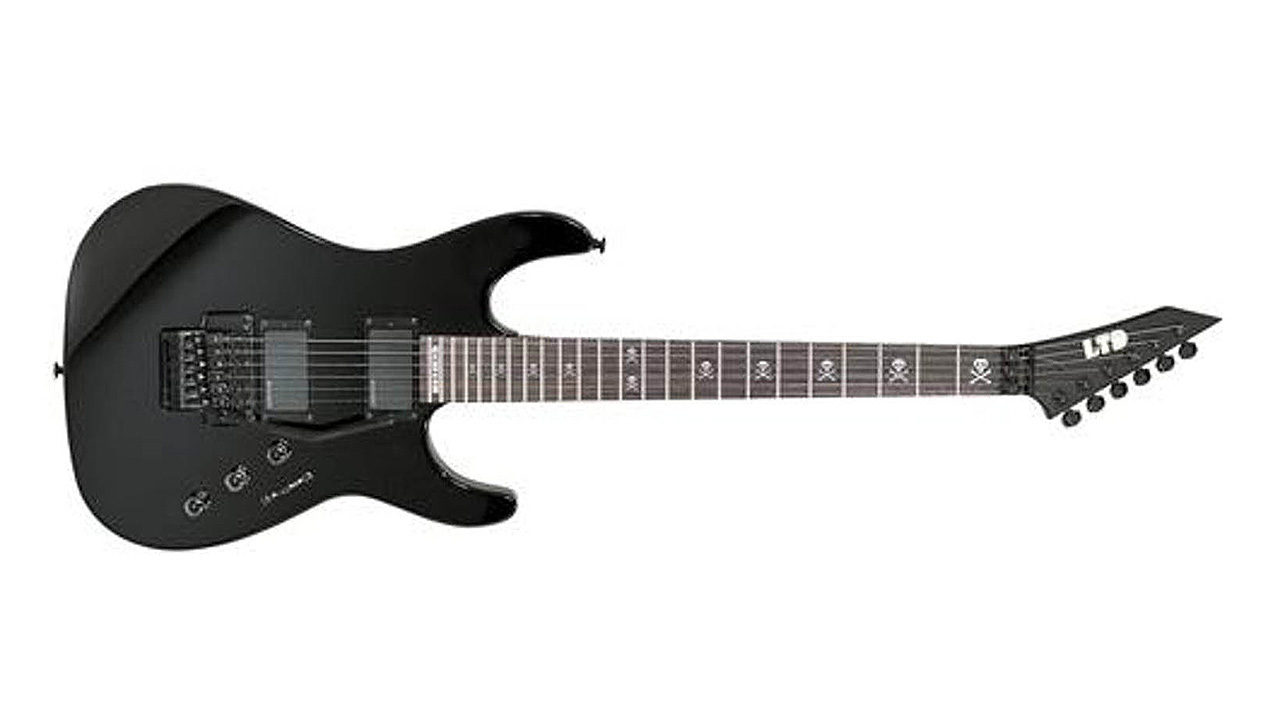
ESP/LTD KH-202
The KH-202 might be a budget-conscious bolt-on version of Hammett’s exalted signature model but it’s style an exceptional instrument that gets so much right. You’ve got a basswood build with a super-thin maple neck, rosewood fingerboard with 24 extra-jumbo frets.
The pickups are high-output passive humbuckers that, through the right amplification and with enough gain dialled in, should give you all the chug you need for casually throwing down rhythm figure one of The Shortest Straw.
Kirk Hammett: The amplifiers
At home, Kirk Hammett uses all kinds of amplifiers. He’s particularly partial to vintage Vox and Fender combos, and loves the Sundragon Jimmy Page amp – a super-premium hand-wired replica of Page’s modified Supro Coronado. But he’ll use digital modelling combos too, such as the Boss Katana and Postive Grid Spark.
With Metallica, it’s a different kettle of fish. For much of Metallica’s history, you could track Hammett’s tone with Hetfield’s. They both used Hetfield’s modded Marshall in the early days, gravitating to the Mesa/Boogie Mark IIC+ for the Master Of Puppets sessions. While Hammett would bring a number of amps to the party, Mesas have remained a cornerstone of his sound.
Hammett’s current live sound comes via a Fractal Axe-Fx unit that takes a blend of his Mesa/Boogie Dual Rectifier and the Meathead – a six-channel, MIDI-programmable behemoth that was designed by Mike Fortin and produced under the Fortin Amps name and by Randall as the 667.
No Expense Spared
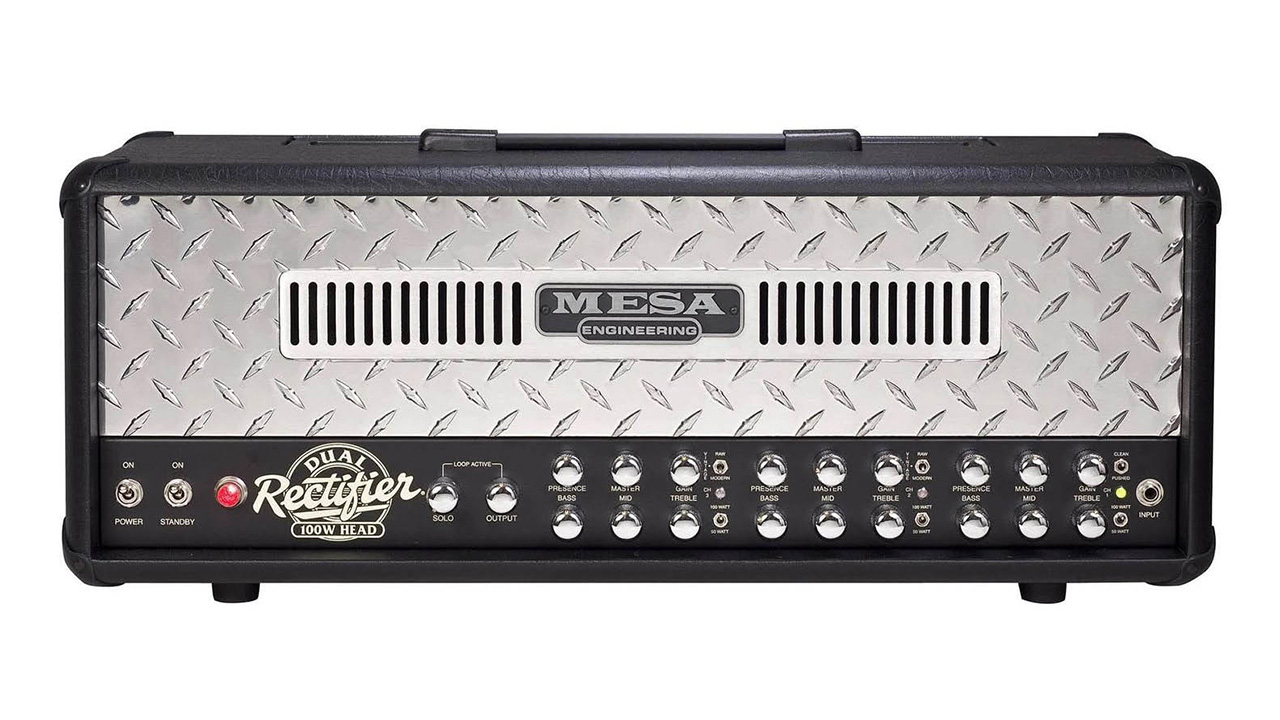
Mesa/Boogie Dual Rectifier
The Dual Rectifier is widely regarded as the classic modern metal amplifer, which it is, but before we get to the more Metallica-friendly side of the amplifier, we should note that some of the clean tones on this are so sweet. And this is Mesa/Boogie all over; highly tweakable boutique amplifiers that take a lot of time to fully fathom.
The Dual Recifier has two channels. One for clean and gently pushed tones, the other with Raw, Vintage High Gain and Modern High Gain voicings. There’s so much gain on tap here. Stick a gnarly overdrive in front of the vintage mode and we’re talking Ride The Lightning.
Dime the modern voicing and that gain will really tighten up, and if you cut some of those mids you’ll be entering the super-harsh scorched earth tones of the …And Justice For All era. It’s not a beginner’s amp, but when you find the sweet spots it’ll reward you

Mesa/Boogie 4x12 Rectifier Standard Slant Speaker Cabinet
Loaded with Celestion Vintage 30s and constructed from void-free Baltic birch, speaker cabinets don’t get much better than this. If you want to get the best out of that Dual Rectifier, run it hard, and run it through this.
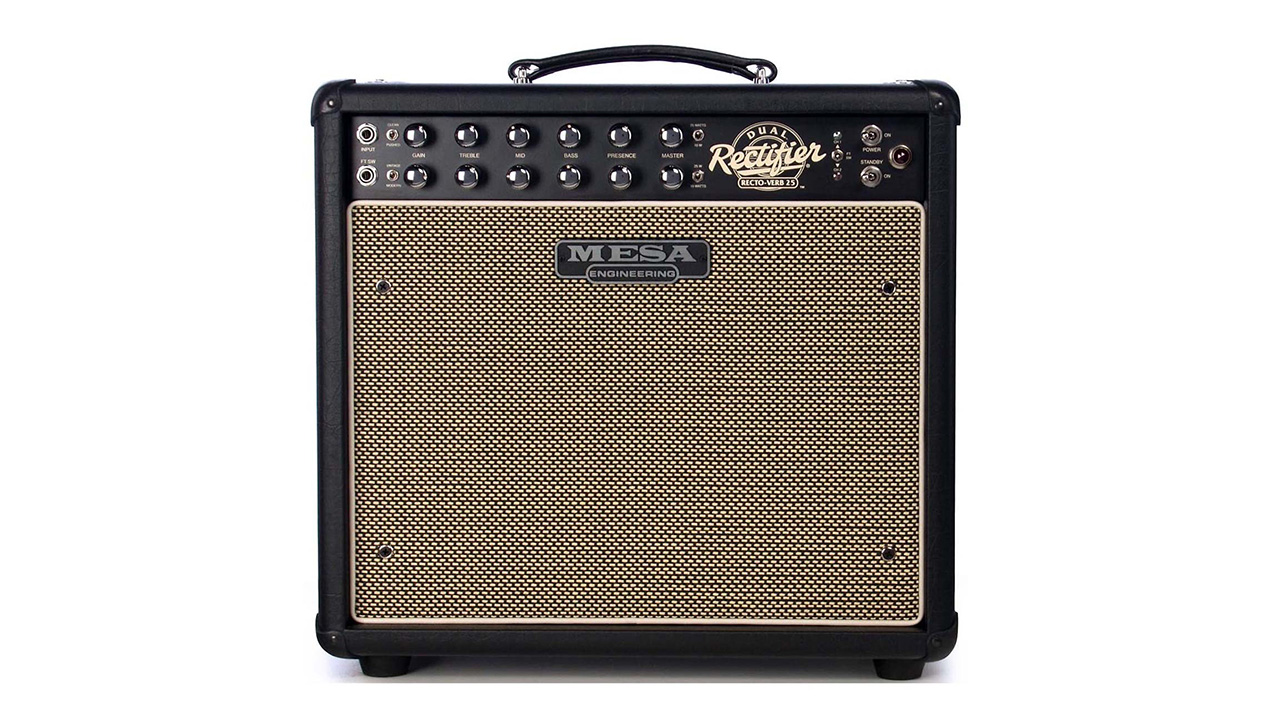
Mesa/Boogie Recto-Verb 25 1x12 Combo
Alternatively, the Recto-Verb 25 makes Hammett’s tones available in a smaller and more convenient format. It’s a two-channel amp, but with two different voicings per channel it is supremely versatile.
The lead channel’s Vintage voicing should work well for old-school Metallica tones – just throw an overdrive in front of it. At 25W, it is still exceptionally loud, but you can dial switch it down to 10W so you can engage its gain stage earlier. There is an abundance of tone-shaping options, with a 3-band EQ for each channel, and the reverb is lush and musical – ideal for adding a bit of depth to your tone
On a budget
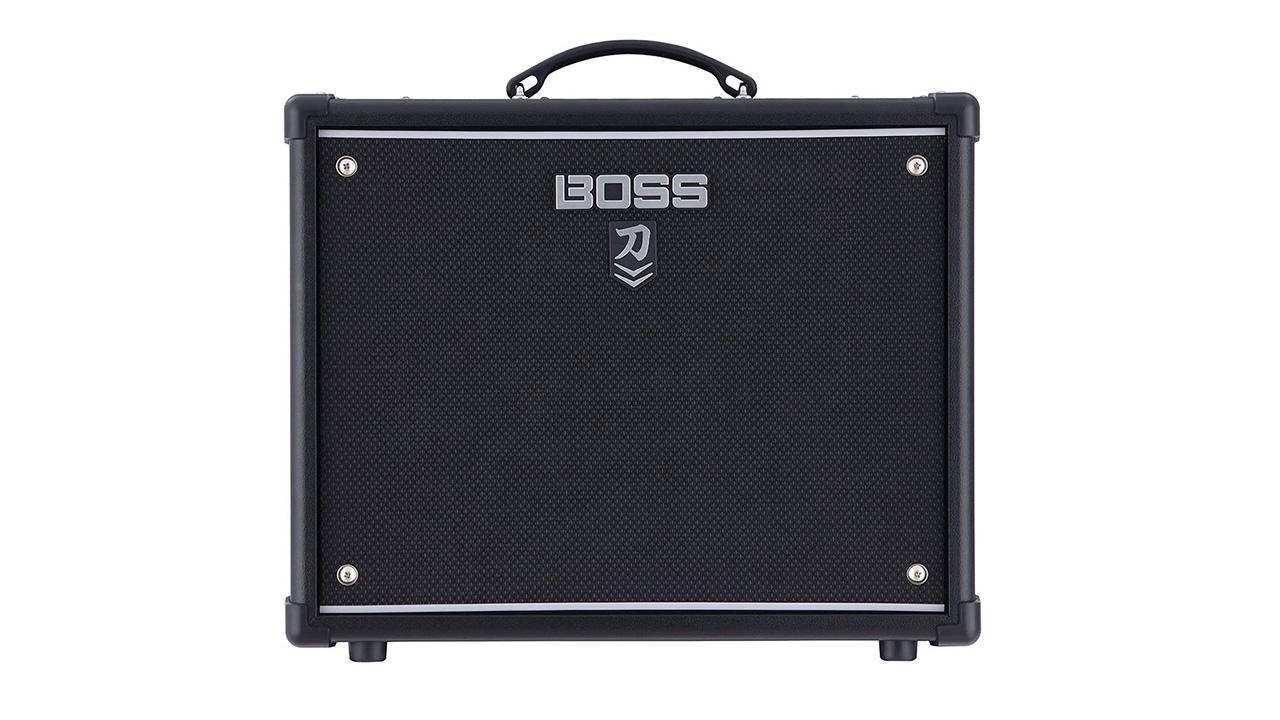
Boss Katana 50 MkII 1x12” Combo
One of Hammett’s favourite at-home amplifiers, and it is as cheap as chips, with a huge variety of onboard effects and amp types that should get you in the ballpark of Hammett’s tones. There are five amp types to play with, and a variation switch to give you an alternate voice on each setting. Boss’s Tube Logic tech ensures that the gain feels right, with the same level of harmonic detail you might get from a valve amp.
Unlike valve amps, the Katana has five onboard effects sections – Booster, Mod, FX, Delay, and Reverb, and you can store your favourite settings and control them via a footswitch. All this functionality, and it’s a cinch to use, too. This is a fun amp.
Kirk Hammett: Effects and Accessories
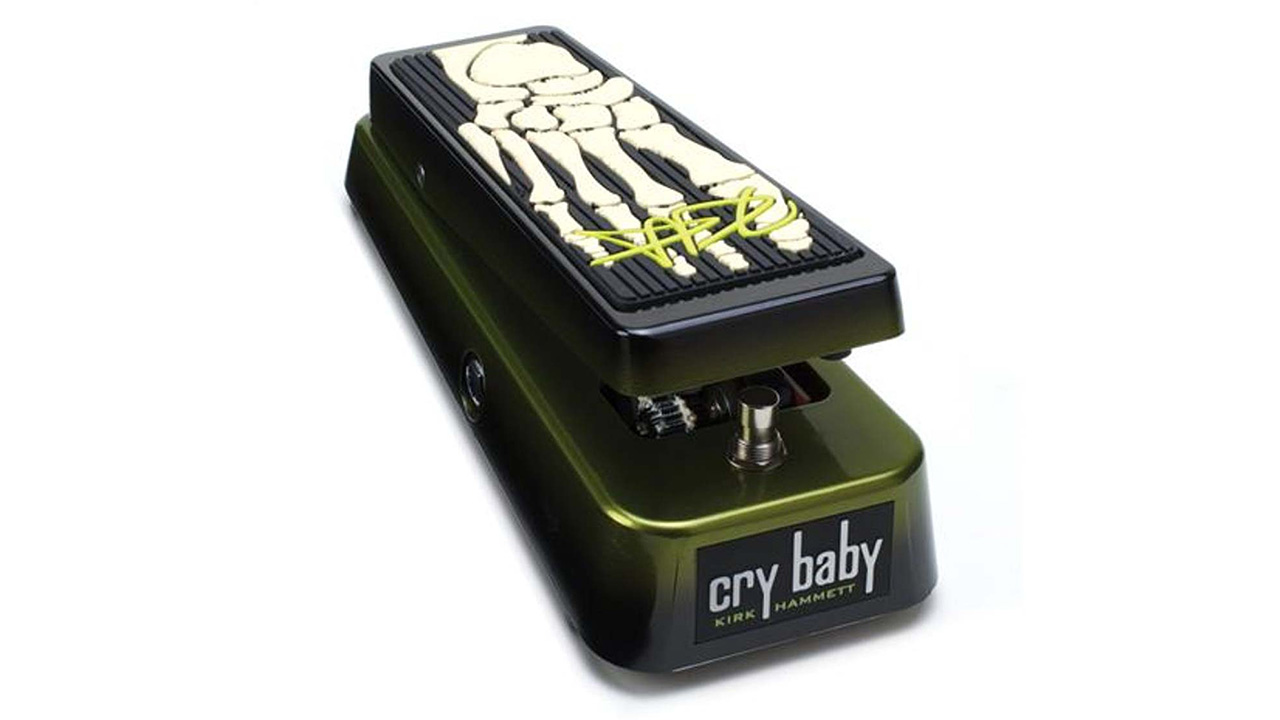
Jim Dunlop KKH95 Kirk Hammett Signature Wah
An essential component of Hammett’s sound, his signature wah is hugely musical, modelled after his rack-mounted DCR1SR Cry Baby Rack Wah. What we love about this is that it has a nice wide sweep that leaves plenty of meat on your signal. And the skeleton foot print is pretty cool.
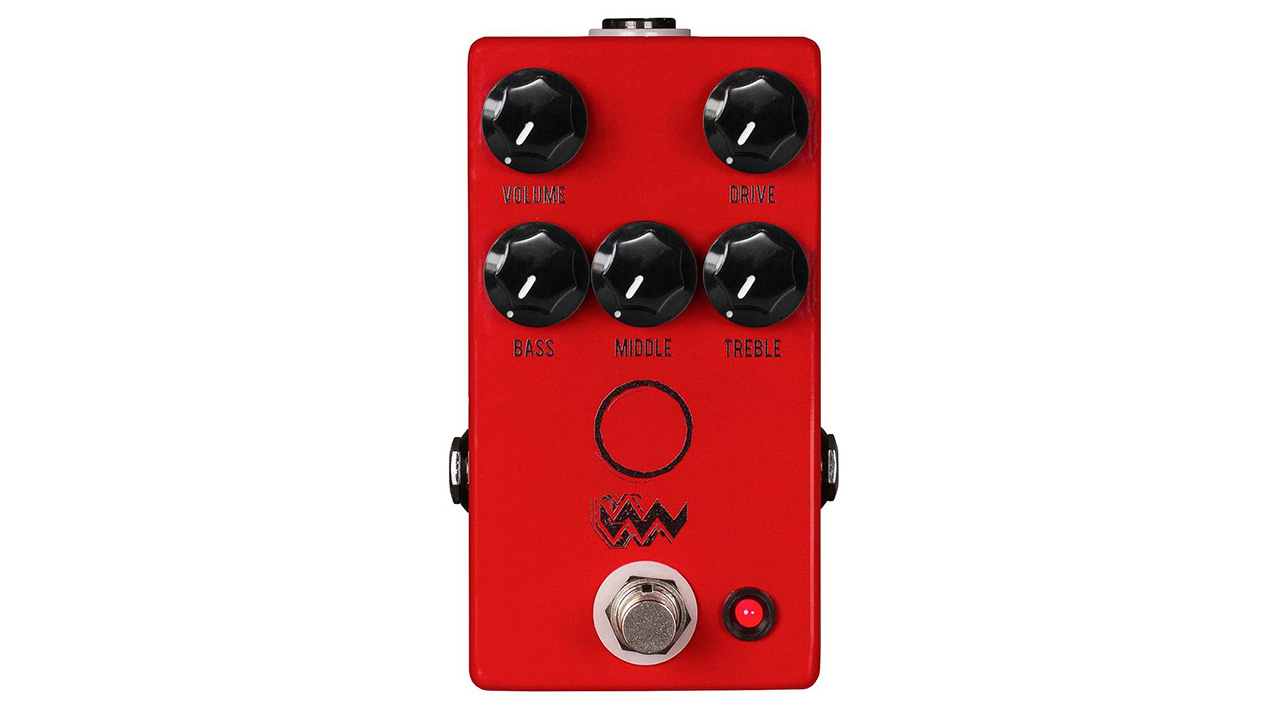
JHS Pedals Angry Charlie Overdrive/Distortion v3
We want the option of some Marshall JCM800 flavour to Hammett’s tone, so when going old-school Metallica, the Angry Charlie is an excellent overdrive to step on. With a 3-band EQ, volume and drive, it’s very much an amp-in-a-box pedal. Say you’ve got the Mesa scooped, you can dial in some mids on this and bring them in with this. It’s an incredible overdrive.
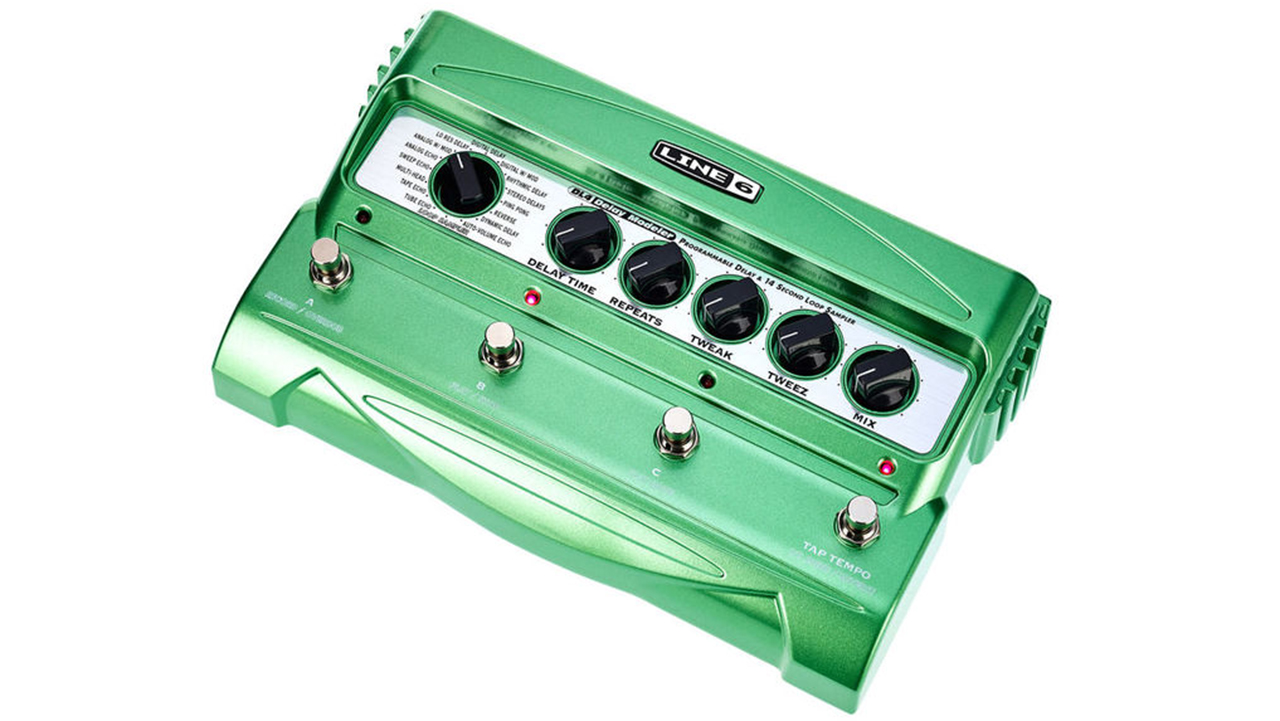
Line 6 DL4 Delay Modeller
A perennial on Hammett’s rig, the DL4 is a one-stop shop for all things delay. Hammett doesn’t over do it, but a little delay on the solos will add a sense of space and sheen.
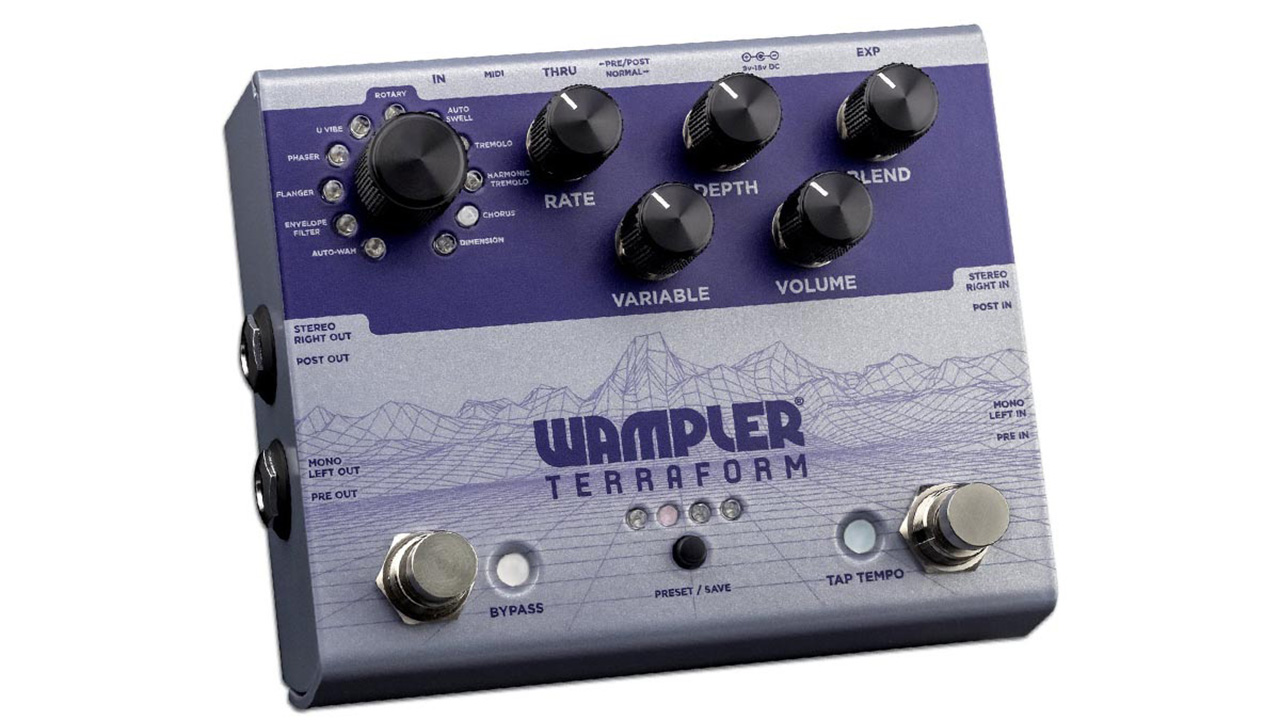
Wampler Terraform Modulation Multi-FX
With the Line 6 MM4 discontinued, we’d opt for the Terraform for an all-in-one solution for modulation. Again, like delay, Hammett is not a heavy user, but he will use a little on his solos now and then and the chorus works well for the clean tones.
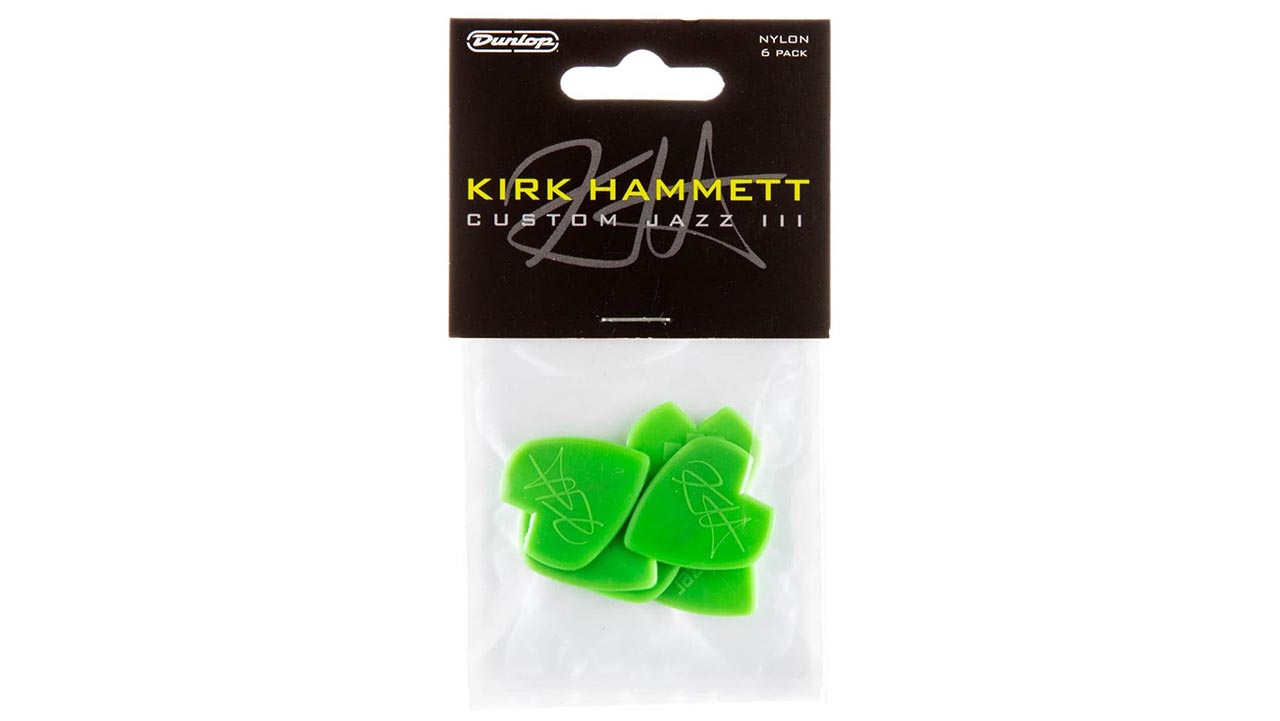
Jim Dunlop Kirk Hammett Nylon Jazz III 1.38mm guitar picks
The Nylon Jazz III is one of the best picks. Hammett’s signature V-shape cutaway was to enhance grip but it also offers some different options for adjusting your pick attack and makes for some very cool pick slides.
The latest news, features and interviews direct to your inbox, from the global home of alternative music.
